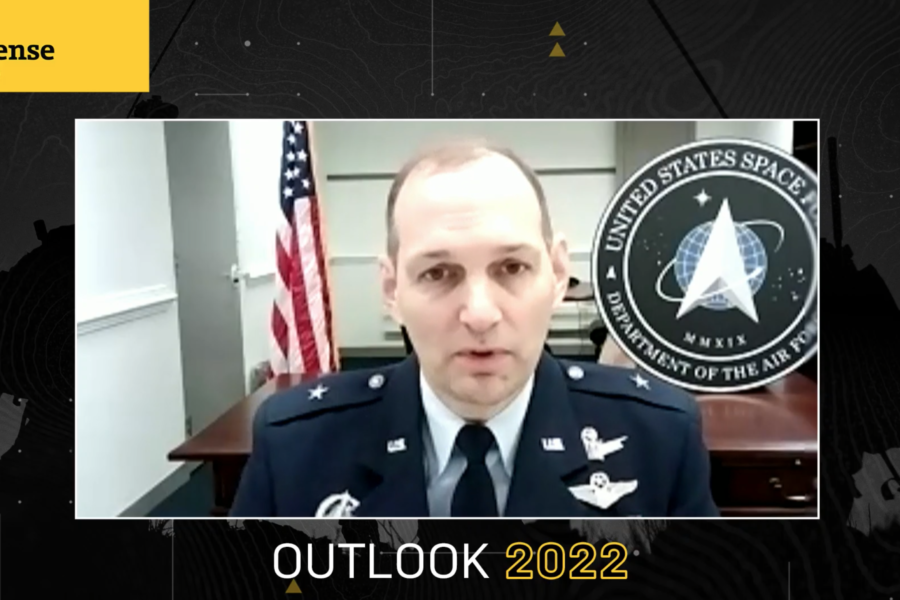Within the next five to 10 years, Space Force Brig. Gen. John M. Olson envisions far more than just one mission from NASA to return humanity to the moon—he anticipates a “vibrant commercial focus” led by rapidly expanding space companies.
A key component of that will be a “resilient, robust hybrid space architecture, one which has a vision that is well off to the moon and perhaps beyond,” Olson, the mobilization assistant to the Chief of Space Operations, said at Defense One’s virtual Outlook 2022 forum Dec. 8.
That architecture, sometimes referred to as a space “highway,” will have to be a collective effort, Olson said, between private industry, civil agencies, and the military. But given that the Space Force is responsible for space domain awareness, it will have to play a particularly crucial role.
“This is right around the corner,” Olson said. “This is an important area that we look at, one in which we’re following the lead of NASA and we’re actually bolstering strong collaborative partnership with NASA, with industry, with our partners and allies, and like-minded nations around the globe.”
Just how this architecture will be structured and built out is “the grand strategy question, or opportunity, I would rather say, for our time,” Olson said. But there was one point on which he insisted—China cannot be allowed to reach the Moon and build up its own architecture before the U.S.
“As we look at this global competition for resources, for opportunities, for exploration, and for the benefits that can leverage so much goodness here on the face of the Earth, I think the United States must be first,” Olson said, pointing to aggressive actions taken by the Chinese on Earth as evidence that they will look to impose their will wherever possible.
At the moment, there are no Space Force Guardians actually in outer space. But Lt. Gen. Stephen N. Whiting, head of Space Operations Command, said in July that he would not be surprised if there are space-faring Guardians in the near future. And Olson’s vision of the space architecture of the near future is similarly far-reaching and transformative.
“The … federal highway systems, which are actually known by the Eisenhower federal highway and defense systems, just like that enabled transportation and the ability to safeguard our nation, the ability to stimulate commerce and business across the United States, as did the electrical grid, and the transcontinental railroad, and the internet—all these great examples of infrastructure underlie this huge opportunity that we have now as we look at space,” Olson said.
The role of the government, and more specifically the Space Force, in all of this is to ensure space domain awareness and to “set the standard for interoperability and set the guidelines and the rules of the road,” Olson said.
The issue of domain awareness and safety has become increasingly relevant after Russia conducted an anti-satellite missile test Nov. 15 that created a cloud of hundreds of pieces of debris.
Rattling off statistics from previous satellite tests by other nations that created smaller debris fields lower in orbit, Olson criticized the Russian test as reckless and “absolutely gross in its impact.” Such tests, he added, highlight the need for the Space Force and the awareness it provides for NASA and industry.
“The Space Force focus is on resilience, because we now know that we have a contested environment. As you just saw on the 15th of November, our competitors around the globe have had a series of irresponsible acts in space,” said Olson. “And as much as we do not like that, we also feel that that’s a pragmatic reality that we’re going to have to know and deal with.”


